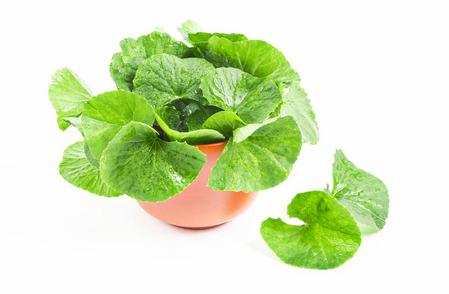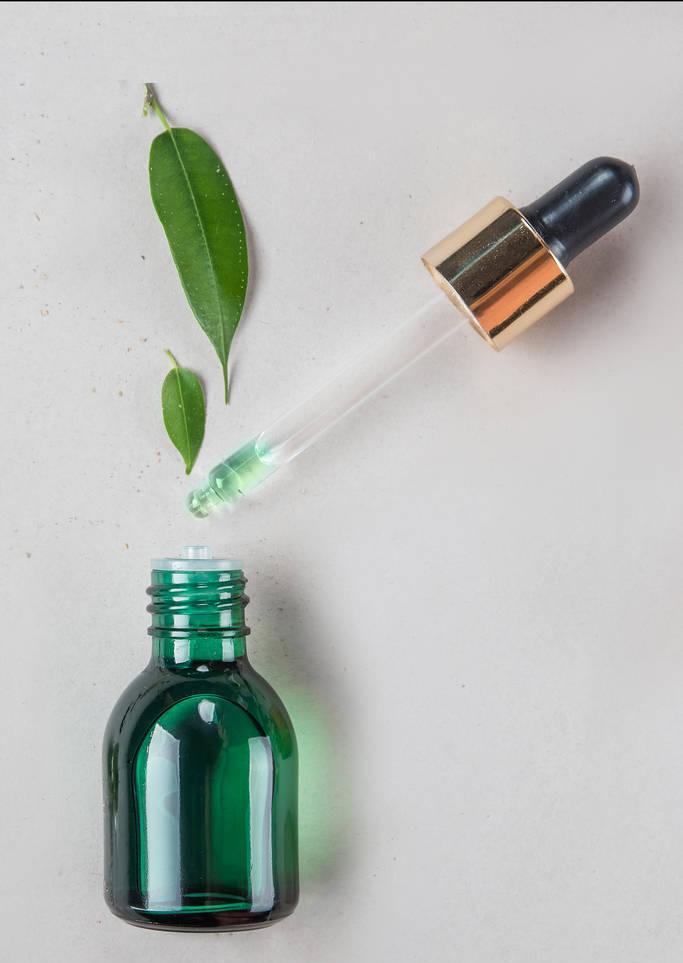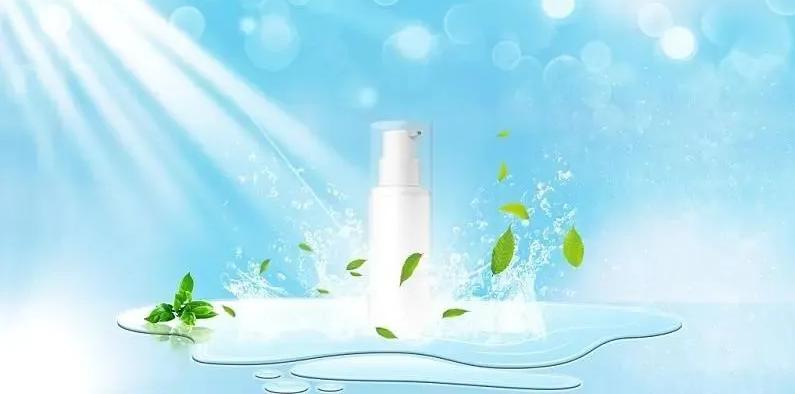The 8 Extraction Methods of Centella Asiatica Extract
Centella Asiatica is the dried whole grass of Centella Asiatica, family Umbelliferae[1] . Perennial creeping herb. It is also known as: eighteen short, horseshoe grass, Lei Gong Root, ark shell grass, copper money grass and drop to beat. It grows in shady, moist areas, e.g. alongside country roads, rivers and ditches. The stems of Centella Asiatica are ambulatory, with rooting at the nodes; the leaves are alternate, with long petioles; and the leaf blades are rounded or kidney-shaped, with a diameter of about 2 to 4 cm.
The leaves of Centella asiatica are often curled up into a ball, and the stems are thin and long. The origin of Centella Asiatica is India, and it is now widely distributed in tropical and subtropical regions of the world, with its distribution in China mainly concentrated in the regions south of the Yangtze River. Centella asiatica is a commonly used traditional Chinese medicine in China's Pharmacopoeia. It is cold, bitter, and pungent in taste, and has the efficacy of clearing away heat and dampness as well as eliminating swellings and detoxifying toxins, which is suitable for the symptoms of dampness-heat, diarrhea, hemorrhagic drenching, sores, and poisons.

The main factor restricting the development of the plant extraction industry is the extraction and separation of plant active ingredients. The disadvantages of traditional extraction and separation methods include low extraction efficiency, high energy consumption, cumbersome processes, and long production cycles.
To overcome the shortcomings of traditional extraction methods, researchers have proposed a variety of new extraction methods for the plant extraction industry, including ultrasonic extraction, microwave-assisted extraction, near-critical water extraction, and enzyme extraction, etc. It is expected that a low-cost, high-yield extraction method can be used. It is expected that a modern separation technique with low cost and high yield can be used to extract and separate the compounds with different polarity in Centella Asiatica, which can provide a solid technical basis for the study of the active components of Centella Asiatica extracts.
1. Ethanol Extraction
A simple method for extracting the active substances of Centella asiatica was reported by Luo [3] et al. in 1980. In this experimental method, 95% ethanol was used as the solvent and the extract of Centella asiatica was obtained by extraction. This is the first report on the extraction and separation of Centella asiatica extracts in China. In recent years, the application value of Centella asiatica has been continuously proposed by researchers, and its related extraction and purification methods have also been further studied.
2. Ultrasonic Extraction
Chen [4] et al. reported a systematic study on the extraction of total centella asiatica glycosides using three extraction methods, namely, ultrasonication, reflux, and immersion. The optimal extraction conditions were selected by orthogonal design method, and the concentration of 75% ethanol was used for ultrasonic extraction for 1h to maximize the content of total centella asiatica glycosides. When the extraction conditions were enlarged to 20 times the amount of extraction, the content of total centella asiatica glucoside reached 1.25%. This indicates that the preparation process is completely feasible.
Chen [5] et al. reported a method to optimize the extraction process of Centella Asiatica by using a field trial design. The optimal extraction conditions were 75% ethanol concentration and 1 h reflux extraction time, under which the transfer rate was 72.3%, which was better than other reported results and provided a reliable basis for industrial production.

3. Acid-base Extraction
Hou [6] et al. reported a method of extracting the whole herb of Centella asiatica by using the acid-base method in the cell-breaking method. The extraction rate of this method was higher than that of the traditional ethanol extraction method. The dried Centella asiatica was pulverized to obtain Centella asiatica powder. The material ratio of powder to solvent was 1:10, and 75% ethanol was used as the extraction solution. The pH was adjusted to 2-6 with HCl and 8-12 with NaOH, and the total centella asiatica glycosides were obtained after a series of refluxing and extraction.
4. Enzymatic Extraction Method
Han [7] et al. reported a method for the extraction of asiaticosides from Centella asiatica by enzymatic extraction. In this experiment, factors such as the type of enzyme, the amount of enzyme, the initial pH of the enzyme solution, the enzyme temperature, the material-liquid mass ratio of Centella asiatica to solvent water, and the enzyme time were investigated, and the optimal parameters of the enzyme extraction were screened by using orthogonal experimental design. Compared with the traditional ethanol extraction method, the enzyme extraction method is a good extraction method with a fast extraction rate, mild process conditions, and high obtaining rate.
5. Decoction Extraction Method
Lu [8] et al. reported a decoction extraction method using the orthogonal test for process optimization and a thin-layer chromatography scanning method for the determination of hydroxyjacksonin content. In this method, water was used as the extraction solvent instead of ethanol, and chitosan was added to the extract for purification. This method has the advantages of saving raw materials, shortening working hours and reducing costs, which is beneficial to the modern industrialized production of Centella asiatica extracts.
6.Near-critical Water Extraction
Wan [9] et al. reported a method for the extraction of asiaticoside and asiatic acid from Centella asiatica using near critical water as the extraction solvent. The method used high performance liquid chromatography (HPLC) to measure the extraction yields of stilbene and stilbene glycosides at temperatures ranging from 100 to 250 °C and pressures ranging from 10 MPa to 40 MPa. In this experiment, the extraction yields of Asiatic acid and asiaticoside increased with increasing extraction temperature or pressure. The extracted asiatic acid and asiaticoside can be collected as particles from water by a simple filtration process. The extraction yields of asiaticoside and asiatic acid using near critical water at 40 MPa and 250 °C were higher than those using conventional liquid solvents (methanol or ethanol) at room temperature.

7. Microwave-assisted Extraction
Wang [10] et al. reported a microwave-assisted extraction of flavonoids from Centella asiatica and determined the optimal extraction process by orthogonal tests. The naturally dried Centella asiatica powder was weighed, filtered through a 100-mesh sieve, and placed in a Soxhlet extractor with petroleum ether for continuous reflux degreasing and decoloration, and the final sample was ventilated and dried. Accurately weighed Centella asiatica powder, according to the material-liquid ratio of 1:10 with methanol, placed in a conical flask, intermittent extraction for 3 times, combined with the extract, evaporation under reduced pressure, dissolved in methanol and fixed in a 100mL volumetric flask to obtain the final product of Centella asiatica extract.
8. Supercritical CO2 Extraction Method
Reverchon [11] et al. reported the supercritical extraction of the weakly polar components of Centella asiatica, which has the advantages of high extraction efficiency and high extraction selectivity and is an environmentally friendly green extraction method suitable for the separation of thermosensitive substances and difficult to separate material systems. The main disadvantage of this method is that the extraction of polar components is highly limited by the poor solvent capacity of supercritical CO2 for polar components.
References:
[1] Zainol M K, Abd-Hamid A, Yusof S, et al. Antioxidative activity and total phenolic compounds of leaf, root and petiole of four accessions of Centella asiatica (L.) Urban[J]. Food Chemistry, 2003, 81(4): 575-581.
[2] Pharmacopoeia Committee of the Ministry of Health of the People's Republic of China. Pharmacopoeia of the People's Republic of China (a)[M]. Beijing: Chemical Industry Press; 1995: 253.
[3] Luo S Q, Chin H F. Isolation and identification of asiaticoside from Centella asiatica (L.) Urban[J]. Chin Trad Herb Drugs, 1980, 11: 244-246.
[4] Chen Yao, Han Ting, Qin Luping, Zheng Hanchen. Orthogonal design method for the optimization of the extraction process of Cnidium sativum [J]. Chinese Materia Medica, 2003, 26(3): 204-205.
[5] CHEN Yi, GAO Wenyuan, YU Quanlin, CHEN Haixia. Optimization of extraction process of Centella asiatica by Taguchi experimental design[J]. Chinese Journal of Traditional Chinese Medicine, 2007, 32(6): 1714-1716.
[6] HOU Wenyan, SHEN Ning, GAO Renxiao. Research on the extraction process of Centella asiatica[J]. Applied Chemical Engineering, 2011,(32)04:
679-681.
[7] HAN Wei, CHEN Huidan, FAN Liang, WANG Chunli. Enzymatic extraction of Centella asiatica[J]. Journal of Nanjing University of Technology, 2009 31(3): 18-22.
[8] LU Mao-Fang, LI Ruo-Cun, PENG Xin-Jun, Zhan Dang. Research on the extraction and purification process of Centella asiatica[J]. Journal of Hunan University of Traditional Chinese Medicine, 2007, 27(1): 16-19.
[9] Kim W J, Kim J, Veriansyah B, et al. Extraction of bioactive components from Centella asiatica using subcritical water[J]. The Journal of Supercritical Fluids, 2009.
-
Prev
Green Spring Technology Pomegranate Peel Extract (40% Ellagic Acid) Empowering Your Dietary Supplement
-
Next
Three Applications of Centella Asiatica Extract in Personal Care Products


 English
English French
French Spanish
Spanish Russian
Russian Korean
Korean Japanese
Japanese



